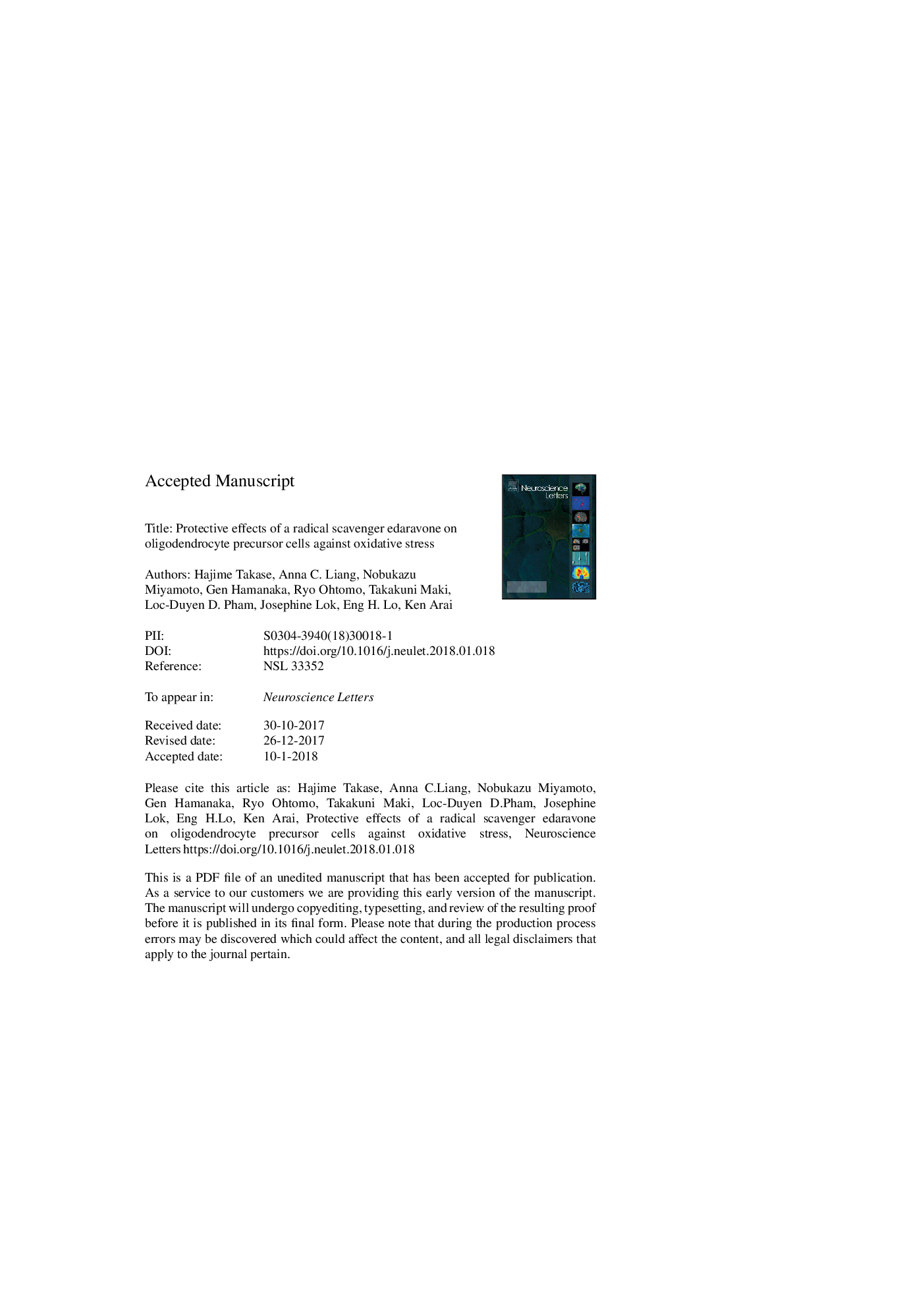| Article ID | Journal | Published Year | Pages | File Type |
|---|---|---|---|---|
| 8841766 | Neuroscience Letters | 2018 | 18 Pages |
Abstract
Oligodendrocyte precursor cells (OPCs) play critical roles in maintaining the number of oligodendrocytes in white matter. Previously, we have shown that oxidative stress dampens oligodendrocyte regeneration after white matter damage, while a clinically proven radical scavenger, edaravone, supports oligodendrocyte repopulation. However, it is not known how edaravone exerts this beneficial effect against oxidative stress. Using in vivo and in vitro experiments, we have examined whether edaravone exhibits direct OPC-protective effects. For in vivo experiments, prolonged cerebral hypoperfusion was induced by bilateral common carotid artery stenosis in mice. OPC damage was observed on day 14 after the onset of cerebral hypoperfusion, and edaravone was demonstrated to decrease OPC death in cerebral white matter. In vitro experiments also confirmed that edaravone reduced oxidative-stress-induced OPC death. Because white matter damage is a major hallmark of many neurological diseases, and OPCs are instrumental in white matter repair after injury, our current study supports the idea that radical scavengers may provide a potential therapeutic approach for white matter related diseases.
Related Topics
Life Sciences
Neuroscience
Neuroscience (General)
Authors
Hajime Takase, Anna C. Liang, Nobukazu Miyamoto, Gen Hamanaka, Ryo Ohtomo, Takakuni Maki, Loc-Duyen D. Pham, Josephine Lok, Eng H. Lo, Ken Arai,
